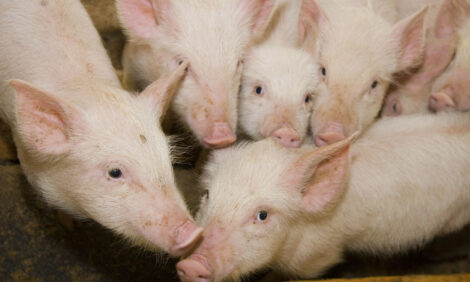



CME: High Consumer Level Demand for Pork
US - First — We do indeed realize that it would take 20+ years to slaughter 69.1 million sows in the US, write Steve Meyer and Len Steiner.That should have read 69.1
THOUSAND in Thursday’s DLR. We still haven't discovered the optimal
number of proofreads for just one person to do. It is obviously
more than three!!! In addition, we also now realize that US sow
slaughter for the week of 25 July was indeed higher than one year
ago, so that 69.1 THOUSAND total for the week that ended 15 August
was the second week this year that has seen sow slaughter exceed
one year ago. The point remains that we haven’t slaughtered many
sows this year — not near enough yet to make any significant difference
in the sow herd.
The University of Missouri’s July estimates for demand indexes
for the three largest meat/poultry species showed more of the
same: Higher for pork, lower for both beef and broilers. These indexes
measure the position of a demand curve in a standard P-Q supply
demand diagram relative to its positioning in 1985. We then present
these indexes as a percent change from one year ago. Beef demand
is down 1.5 per cent for the year to-date while pork demand is up 4 per cent
and chicken demand is down 3.5 per cent.

Some readers may wonder how the pork industry can be in such a financial crisis while consumer level demand for pork is higher. The answer, in part, is that hog demand is lower as is shown in the chart below. The consumer-level demand index does not measure the impact of exports, a critical factor so far in 2009, or packer margins which, until recently had been so low that they have actually HELPED hog demand relative to consumer-level demand for much of this year. Higher consumer-level pork demand has been driven by 1.5 per cent higher per capita consumption through June. The reasons for that jump, of course, have been higher production and export difficulties which have forced product on to the US market. But the reason that the demand index is higher is that retail prices have not fallen by as much as would be expected for that increase in domestic consumption. They have, in fact, RISEN by 3 per cent, YTD.

Both the beef and fed cattle indexes are down, year-to-date. Per cap beef consumption has fallen by 2.9 per cent YTD and retail beef prices have risen by only 1.4 per cent, a smaller amount than would have happened has demand been constant. Fed cattle demand has been helped by exports this year but hurt by MUCH lower by-product values.









